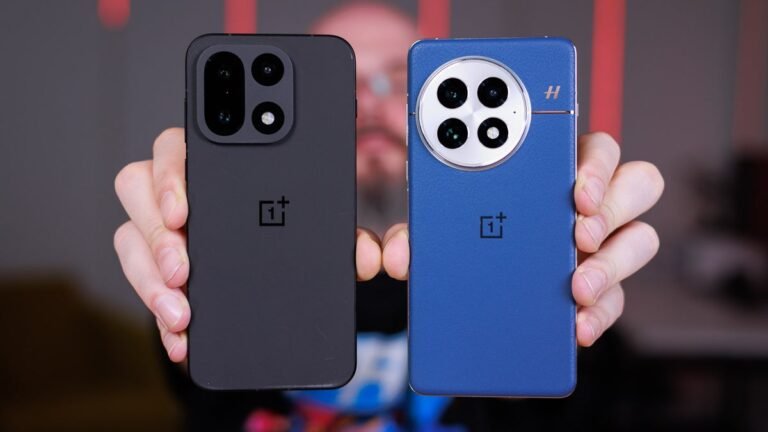The OnePlus 15 camera not only looks completely different from previous OnePlus camera systems, it’s also the first one to skip the Hasselblad logo in a while.
OnePlus adopts its own DetailMax proprietary image engine for the processing, loses some camera modes like XPan, and also changes the camera hardware.
| Main camera | |
|---|---|
| 50 MP (OIS, PDAF) Aperture size: F1.8 Focal length: 24 mm Sensor size: 1/1.56″ Pixel size: 1.0 μm |
50 MP (OIS, PDAF) Aperture size: F1.6 Focal length: 23 mm Sensor size: 1/1.43″ Pixel size: 1.12 μm |
| Second camera | |
| 50 MP (Ultra-wide) Aperture size: F2.0 Focal Length: 16 mm Sensor size: 1/2.88″ Pixel size: 0.61 μm |
50 MP (Ultra-wide) Aperture size: F2.0 Focal Length: 15 mm |
| Third camera | |
| 50 MP (Telephoto, Periscope, OIS, PDAF) Optical zoom: 3.5x Aperture size: F2.8 Focal Length: 80 mm Sensor size: 1/2.76″ Pixel size: 0.64 μm |
50 MP (Telephoto, Periscope, OIS, PDAF) Optical zoom: 3.0x Aperture size: F2.6 Focal Length: 73 mm |
| Front | |
| 32 MP | 32 MP |
See the full
OnePlus 15 vs OnePlus 13 specs comparison
or compare them to other phones using our
Phone Comparison tool
The key highlight is a new main camera sensor, which is surprisingly slightly smaller than the one on the OnePlus 13. The ultra-wide camera is tweaked a bit too, in the direction of being just a bit less wide (16mm now vs 15mm before). And finally, the telephoto camera changes from a 3X one previously to a slightly tighter 3.5X version.
So is this new OnePlus 15 an upgrade, is it a downgrade, or is it somewhere in between? Let’s find out.
Zoom Quality
Selfies
Main Camera (Day photos)
Main Camera (Night photos)
Ultra-wide Camera (Night photos)
Zoom Quality (Night photos)


